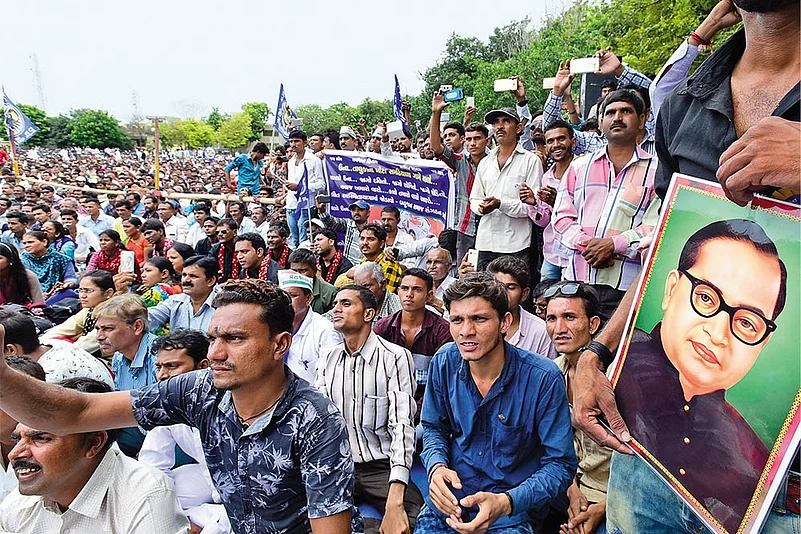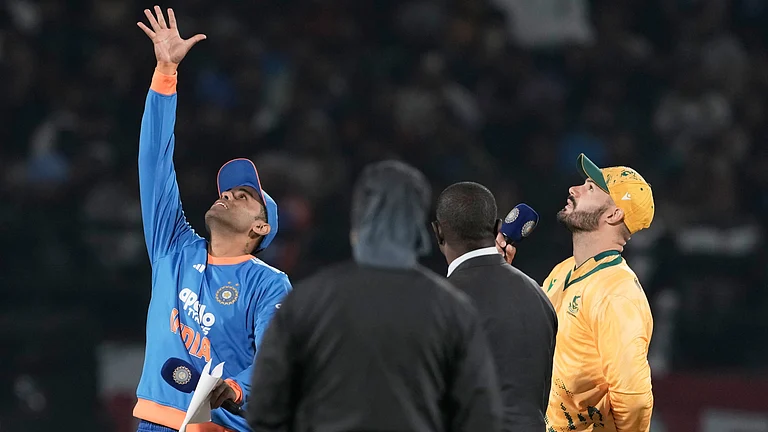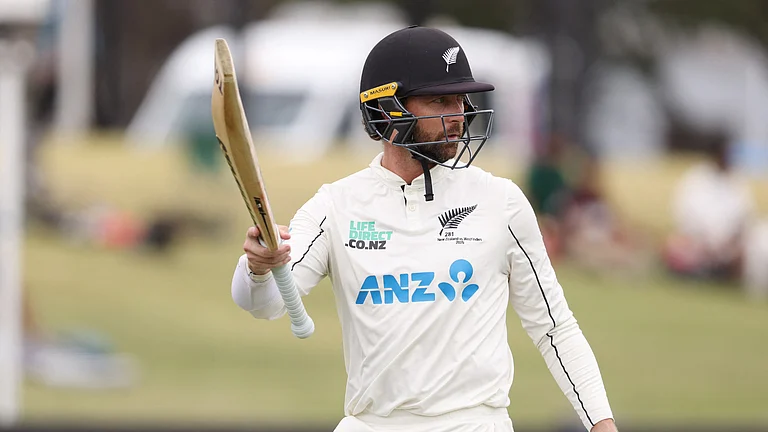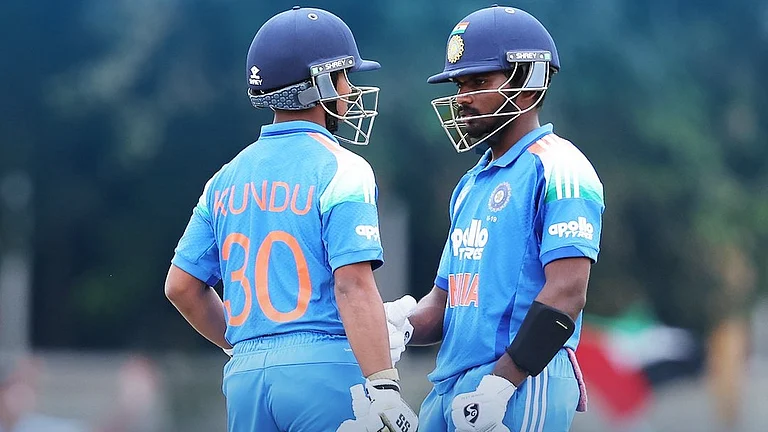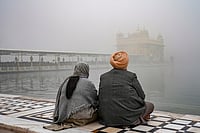At the risk of oversimplification, one may say that caste conflict has surfaced once again in Gujarat in the midst of a liberalising economy, proving the Hindutva belief that caste withers away with communal polarisation is only wishful thinking. The state is witnessing two unprecedented caste-based political mobilisations—one, of dominant-caste Patidars, and the other, of the oppressed-caste Dalits. Educated youth, 28-35 years old, have been the largest chunk of participants in the Patidar agitation for decent jobs and opportunities for prosperity as well as in the Dalit movement for the protection of their dignity and access to a sustainable source of livelihood and cultural autonomy.
On August 25 last year, more than five lakh Patidars assembled in Ahmedabad under the banner of the Patidar Anamat Andolan Samiti (PAAS). With the slogans ‘Jai Patidar’ and ‘Jai Sardar’, they are demanding reservation in the government sector and higher education institutions for their caste, or else the scrapping of reservation system altogether.
A little less than a year later, the 350-km Dalit Yatra from Ahmedabad to Samadhiyala village near Una town saw people from the oppressed castes in 25 villages on the route publicly vowing to give up their traditional caste occupation of skinning or disposing of dead cattle. After eight days of indifference as the Dalits marched on, the gau rakshaks (cow protectors) struck when the procession reached the villages close to Samadhiyala a day before Independence Day. Roads were blocked and stones were thrown at the marchers, forcing them to change their route to minimise clashes. In fact, some Dalits were reportedly forced to chant “cow is our mother”. Even after the final meeting of the yatra on August 15, around 19 Dalits were attacked and injured on their way back.
Though the causes for atrocities on Dalits have been generally related to land, wages, water, housing, sexual assault and the practice of untouchability, clashes over cultural practices are not entirely unknown. Dalits, for example, have faced the wrath of caste Hindus for simply wearing ‘decent’ clothes (“How dare you dress as we do?”) or, in one instance at least, for demanding more milk in his tea at a tea stall.
In the Una incident, Dalit tanners were beaten up as they didn’t bow down to the diktat that they must give up their traditional occupation and bury dead cows instead of skinning them. A week earlier, vigilantes had thrashed tanners at Rajula, a neighbouring village. The tanners’ resistance was against the vigilantes dictating newly invented ‘nationalist cultural’ practices even as the Dalits have no alternative means of livelihood and where, despite “sanskritisation” (a sociological term for the conscious adoption of Brahminical values and practices), a sizeable section has not given up eating meat. According to NSSO data, 70 per cent of the SCs in India (in Gujarat, I guess, around 30 per cent) eat carrion/beef either of naturally dead or slaughtered cows or bullocks.
Tanning is traditionally considered an ‘impure’ business by the caste Hindus and so the task is assigned to Chamars and Bhangis as their caste ‘duty’. Now, the self-styled champions of culture consider it their prerogative to redefine the vocations of Dalits to maintain India’s ‘Hindu traditions’. In Una, a Muslim boy was forced to beat a tanner to prove that even Muslims are against beef. To show their clout in the BJP-ruled state, the vigilantes dragged the Dalits to the town of Una, tied them to a car bang in front of a police station and brutally thrashed them once again as the policemen looked on. The perpetrators themselves recorded the episode on video and shared it on social media.
Una is no exception. Every year more than 35,000 cases are filed in India under the SCs and STs (Prevention of Atrocities) Act. Among the states, Gujarat is ranked fourth in anti-Dalit violence, with an annual average of 1,100 cases, including murder, rape, kidnapping and abduction, and 11 districts identified as ‘sensitive’. Implementation of the Atrocities Act is dismal, with 4,578 cases pending in courts across the state. Even when cases are filed, the police investigation is utterly negligent, reveals a 2010 study of 400 cases heard in the district courts since 1995. Both at the higher and lower levels, public prosecutors played a hostile role. Over 95 per cent of the cases ended in acquittals due to technical lapses in the investigation and prosecution (the national average is 70.8), and the remaining few saw the government flout the court directives.
The Gujarat government has not followed the rule that atrocity cases must be investigated by a DSP-level or higher police official. The high-power vigilance and monitoring committee in the state for reviewing the implementation of the Act met only six times in the past 16 years, though the law makes twice-a-year meetings mandatory. And there is no dedicated court for cases under the Act as directed by the Centre.
The government has been in denial all along, reluctant to accept there is untouchability and caste-based discrimination in Gujarat, despite the empirical evidence. In its affidavit before the Supreme Court, the government declared the state was free from manual scavenging, regardless of the evidence freely available in the public domain. Indeed, Narendra Modi, the then CM, went on to glorify scavenging as an “experience in spirituality”.
On untouchability, there have been studies showing how the practice has only increased over the years in both private and public spaces such as primary schools, drinking water facilities, and public transport. In 96 per cent of the villages, according to a recent study in Gujarat, Dalits do not have access to the village cremation grounds, and in almost half the villages, not even to common grazing land.
The Patidars’ reservation demand, on the other hand, poses a major conundrum for the government. Their economic prosperity makes them legally ineligible for the OBC tag, and it is tricky politically because giving them reservation would antagonise the OBCs (40 per cent of the population). The Patidars (16 per cent) are the BJP’s ideological, financial and electoral backbone in these parts.
Indeed, a national survey by CSDS, Delhi, showed that more than 60 per cent of the “upper castes” have voted BJP in all assembly and Parliament elections since 1995. To woo them on the eve of local body elections last year, the government announced various schemes worth Rs 1,000 crore for the welfare of the poor for all castes in general (though actually designed to benefit the middle class of the dominant castes). These concessions didn’t pacify the Patidars and the BJP lost a majority of the district and block panchayats.
This May, perhaps with an eye on assembly elections due next year, the Gujarat government, then under Anandiben Patel, announced 10 per cent reservation for the economically backward (officially defined as those with annual household income less than Rs 6 lakh) among the dominant castes. Patidar leaders rejected this as a “lollipop” and the high court declared it illegal. The matter is now with the Supreme Court.
Modi is trying all tricks to heal the hurt Patidar ego, but it is too early to say whether they would vote BJP in 2017. As they have no political alternative, around 40 per cent would perhaps do so, but around 25 per cent might desert the party to teach it a lesson. The Dalit agitation, too, may cause some loss of voteshare for the BJP, even though in Gujarat they are only seven per cent of the electorate and too scattered to be electorally significant on their own.
(The author is an Ahmedabad-based sociologist and a former National Fellow of the ICSSR)
Slide Show
After seven Dalits were stripped and thrashed near Una town for skinning a dead cow, the first response of Dalits was to bring truckloads of bovine carcasses and dump them at government offices, such as district collectorates and tehsil headquarters, in several parts of the state. They said those who call the cow their mother should perform the last rites of dead cattle. “You keep the cow’s tail, just give us our land!” became the slogan of the movement.






